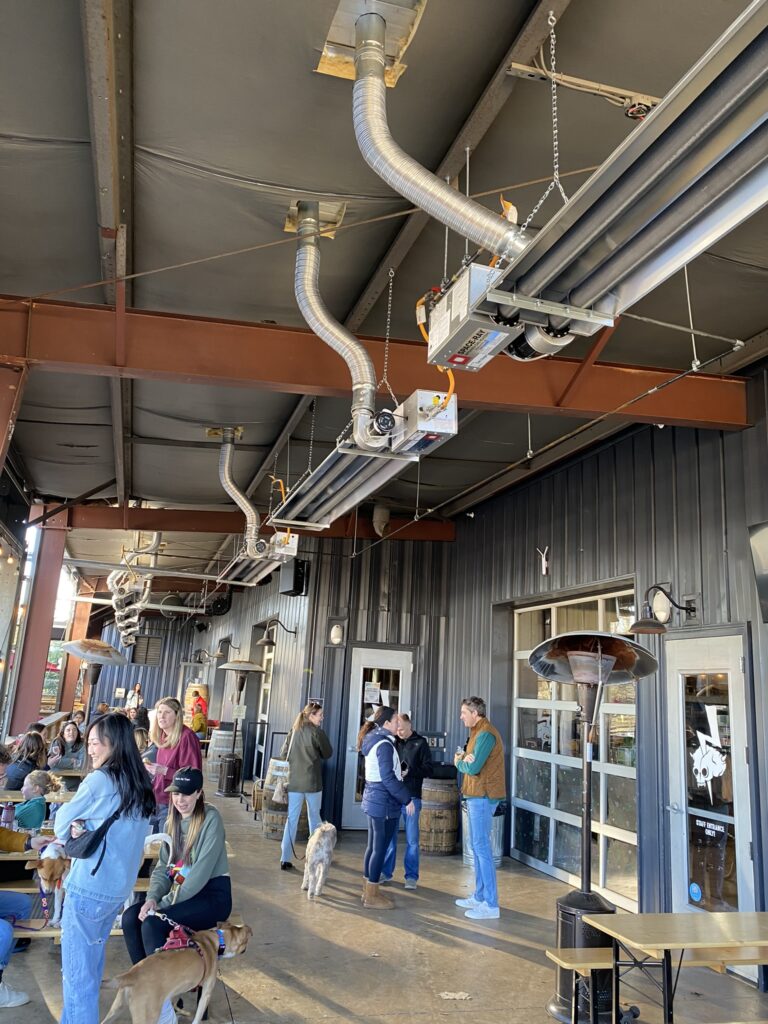
The pressing need for sustainability and environmental consciousness has led industries and individuals alike to explore innovative solutions for reducing their carbon footprint. In the realm of energy efficiency, Space-Ray Infrared Heaters have emerged as an industry leader. Our heaters offer a sustainable and energy-efficient way to heat buildings which can help significantly lower carbon emissions. In this blog post, we will examine the benefits and features of Space-Ray Infrared Heaters and discuss how they contribute to a more sustainable future.
1. Understanding Space-Ray Infrared Radiant Heaters
Space-Ray Infrared Heaters are designed to emit radiant heat, which directly warms objects and individuals, rather than heating the surrounding air like traditional air heaters. This unique characteristic translates into significant energy savings and reduced carbon emissions.
2. Energy Efficiency: A Key to Carbon Reduction
Traditional convective warm air systems often suffer from heat loss due to drafts, ventilation, and inefficient heat distribution. In contrast, Space-Ray infrared heaters transmit heat directly to areas where it is needed; to people, floors, and objects ensuring minimal energy is wasted. The key component to Space-Ray infrared heaters is the ability to warm the floor. As the floor is heated it conducts the heat spreading it as well as storing it. The floor then becomes a large reservoir of heat energy. The reservoir of stored heat energy allows for fast recovery when doors are opened or large infiltration or ventilation occurs. In contrast convective warm air heaters store the heat in the air directly which will easily be removed or lost from the space during ventilation or large infiltration events. Case studies have shown less than a 5-degree Fahrenheit temperature difference from floor to ceiling in a 35ft tall building with Space-Ray infrared heaters. Space-Ray infrared heaters avoid unnecessary heat loss which decreases energy consumption and ultimately leads to a reduced carbon footprint for the building.
3. Zone Heating and Occupancy Sensing
Space-Ray Infrared Heaters are designed for zone heating, which enables different areas within a building to be heated independently. This zoned approach ensures that energy is only used where it’s needed, allowing unused or rarely used spaces to remain unheated.
5. Reduced Maintenance and Longevity
Space-Ray infrared heaters are built to withstand the test of time with reliable materials and advanced technology, resulting in lower maintenance requirements and a longer lifespan. Longer-lasting equipment means fewer replacements and, consequently, less waste.
In Conclusion:
Space-Ray Infrared Heaters contribute to more sustainable heating practices. By embracing these energy-efficient heating solutions, we can reduce our carbon footprint, which will help contribute to the global fight against carbon emissions. The benefits of reduced energy consumption, the integration of zone heating and reduced maintenance make Space-Ray heaters a compelling choice for environmentally conscious builders and property owners.
